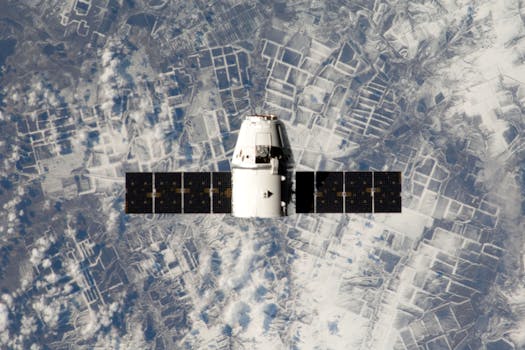From Geostationary to Low Earth Orbit: The Evolution of Satellite Telecommunications in 2023

From Geostationary to Low Earth Orbit: The Evolution of Satellite Telecommunications in 2023
Satellite Telecommunications has revolutionized the way we communicate, and the industry has witnessed significant advancements in recent years. The focus on Satellite Telecommunications has led to a shift from traditional geostationary orbit to low Earth orbit, enabling faster, more reliable, and cost-effective communication services. In this article, we will explore the evolution of satellite telecommunications, the benefits of low Earth orbit, and the current trends and developments in the industry.
Introduction to Satellite Telecommunications
Satellite telecommunications involve the use of artificial satellites in orbit around the Earth to transmit and receive data, voice, and video signals. The first commercial satellite, Intelsat 1, was launched in 1965, marking the beginning of the satellite telecommunications era. Since then, the industry has grown rapidly, with thousands of satellites in orbit, providing a wide range of communication services, including television broadcasting, telecommunications, and navigation.
The traditional geostationary orbit, which is approximately 36,000 kilometers above the equator, has been the primary location for communication satellites. However, with the advancement of technology, the focus has shifted to low Earth orbit, which is approximately 160 to 2,000 kilometers above the Earth’s surface. Low Earth orbit offers several advantages, including lower latency, higher bandwidth, and reduced signal interference.
Benefits of Low Earth Orbit
The benefits of low Earth orbit are numerous, making it an attractive option for satellite telecommunications. One of the primary advantages is lower latency, which is the time it takes for a signal to travel from the Earth to the satellite and back. In geostationary orbit, the latency can be up to 250 milliseconds, whereas in low Earth orbit, it can be as low as 20 milliseconds. This reduced latency enables faster and more responsive communication services, making it ideal for applications such as real-time video streaming and online gaming.
Another significant benefit of low Earth orbit is higher bandwidth, which is the amount of data that can be transmitted over a communication channel. Low Earth orbit satellites can offer higher bandwidth due to their closer proximity to the Earth, enabling faster data transfer rates and more reliable communication services. Additionally, low Earth orbit satellites are less prone to signal interference, which can be a significant problem in geostationary orbit.
Current Trends and Developments
The satellite telecommunications industry is constantly evolving, with new technologies and innovations emerging regularly. One of the current trends is the development of satellite constellations, which involve a large number of satellites in low Earth orbit working together to provide global communication services. Companies such as SpaceX, Amazon, and OneWeb are investing heavily in satellite constellations, with plans to launch thousands of satellites in the coming years.
Another significant development is the use of advanced materials and technologies, such as 3D printing and phased arrays, to manufacture satellites. These technologies enable the production of smaller, lighter, and more efficient satellites, which can be launched at a lower cost and offer improved performance. Furthermore, the use of artificial intelligence and machine learning is becoming increasingly prevalent in satellite telecommunications, enabling the optimization of communication services and the prediction of maintenance requirements.
Conclusion
In conclusion, the evolution of satellite telecommunications from geostationary to low Earth orbit has opened up new opportunities for faster, more reliable, and cost-effective communication services. The benefits of low Earth orbit, including lower latency, higher bandwidth, and reduced signal interference, make it an attractive option for satellite telecommunications. As the industry continues to evolve, we can expect to see new technologies and innovations emerge, enabling the development of more advanced and efficient communication services.





